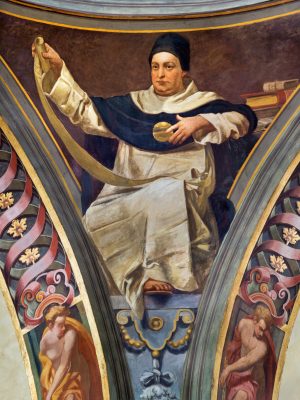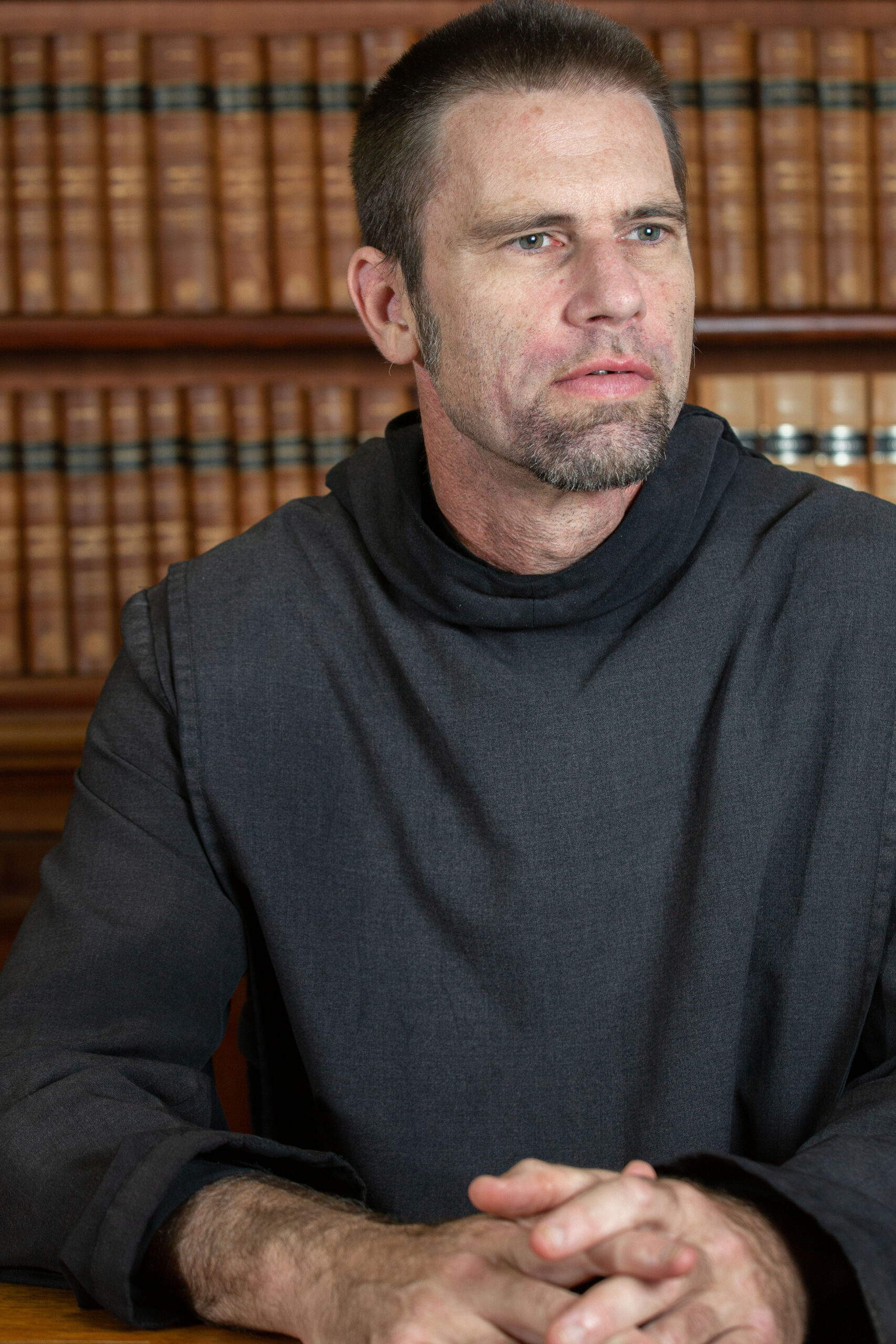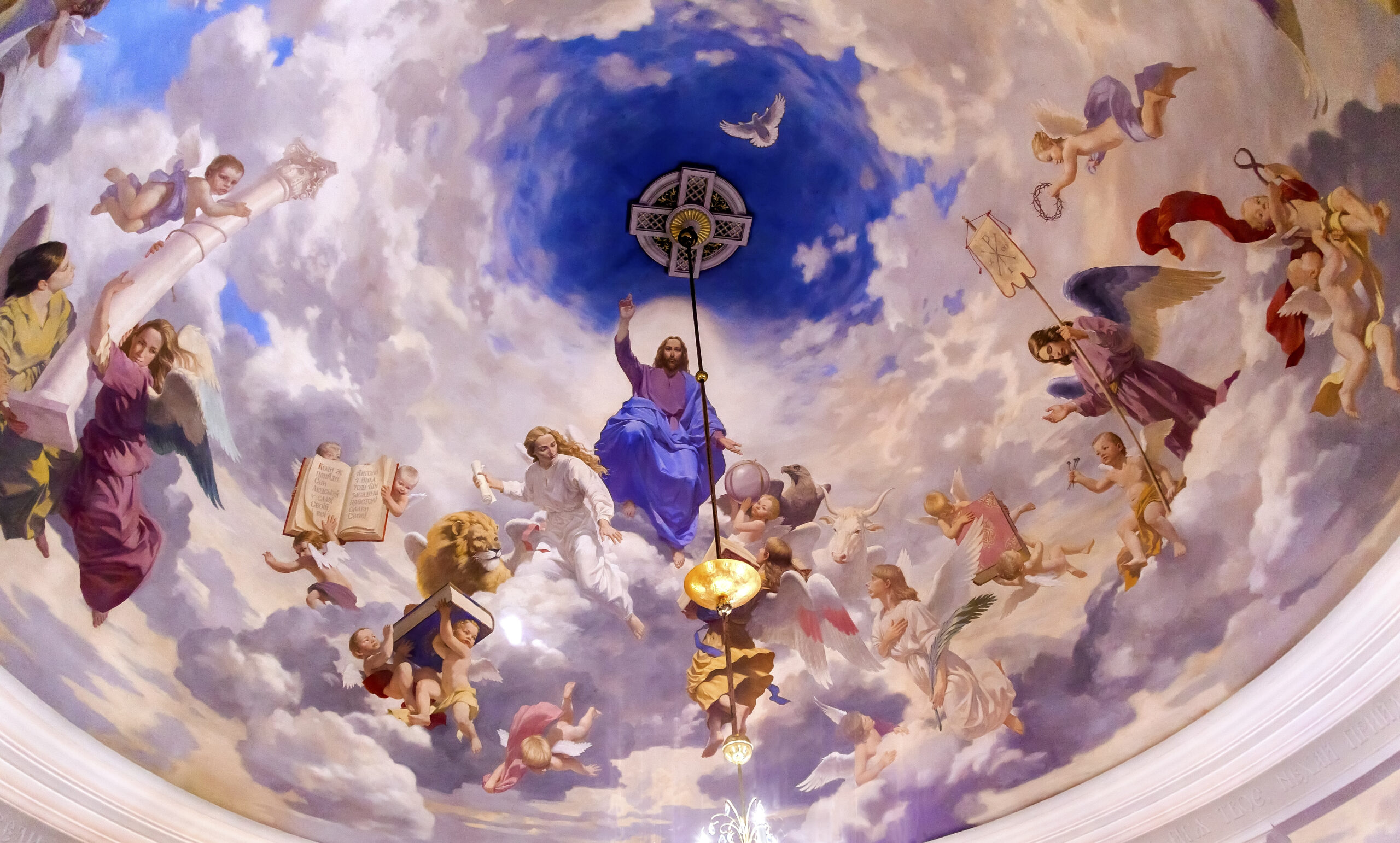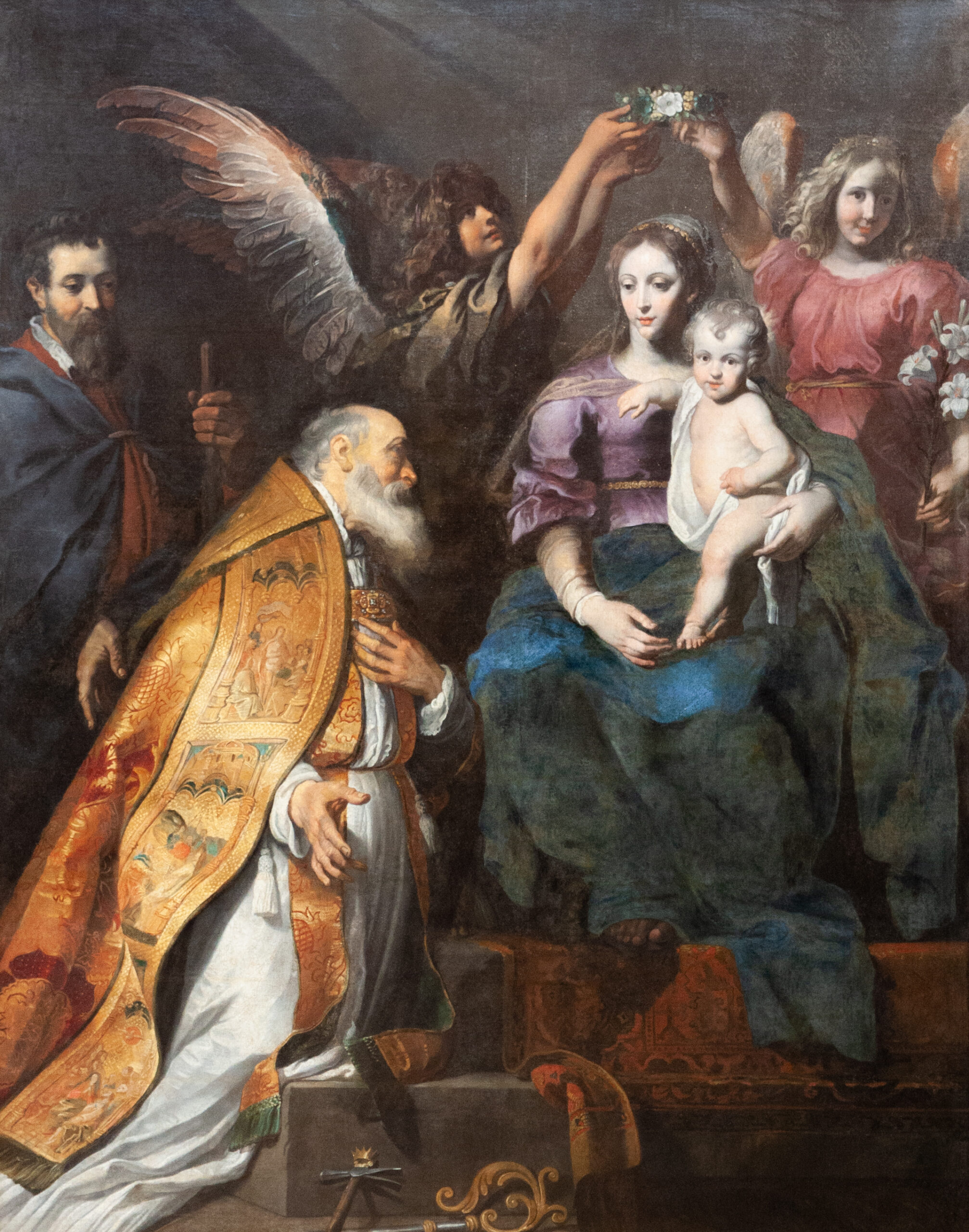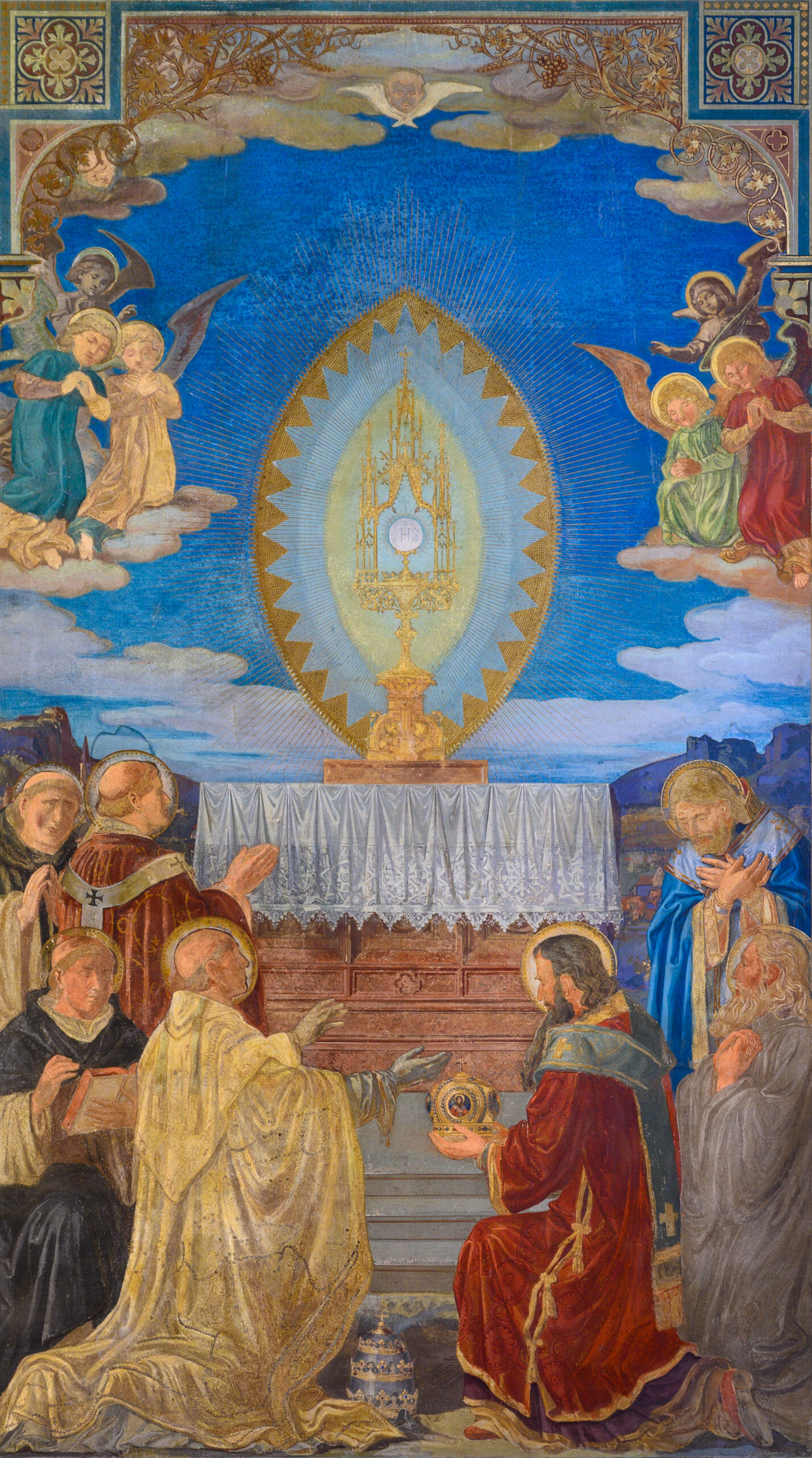St. Thomas Aquinas, honored by the Church with the appellation of the ‘Angelic Doctor’, is amongst the most widely venerated of all Catholic saints. His writings are carefully read by all students of theology, and he is perhaps given more authority than any other single theological writer. Yet despite the fact that he is so deeply investigated as a writer and thinker, surprisingly little is known about him as a saint—which is to say, a man of heroic virtue and profound and wondrous sanctity.
This is not for any lack of material. There are many surviving early testaments to the holiness of Thomas, as a perusal of the relevant volume of the Acta Sanctorum reveals. Foremost amongst these early sources is the very comprehensive life of Thomas, written fairly shortly after his death, by William of Thoco. This work, unfortunately, remains completely unknown to the vast majority of Catholics, although it is the principal and original font from which almost all other versions of his life derive.
There are a number of oft-quoted ‘popular’ stories or myths about Thomas, such as that he was somewhat obese, and that, towards the end of his life, he declared all his previous writings to be ‘straw’. But an examination of the early sources reveal these stories to be myths, or apocryphal distortions of the truth. For example, the earliest life of Thomas describes him not as being obese, but rather of great physical magnitude and very tall and erect stature. It states that in any activity demanding physical exertion, he always proved himself to be peerless in strength, endurance and courage. As for the story of him declaring all his writings to be ‘straw’, the actual original Latin text of the incident in question reads:
Venit finis scripturæ meæ, quia talia sunt mihi reuelata, quod ea, quæ scripsi & docui, modica mihi videntur, & ex hoc spero in Deo meo, quod sicut doctrinæ, sic cito finis erit & vitæ.
Translating fairly literally, this says:
The end of my writings has come. The things which have been revealed to me, and which I have hitherto taught and written, now seem to me to be but little. And therefore I hope in God that, just as my teaching has now finished, so will my life also soon end.
This is indeed very far removed from him describing his wonderful writings to be ‘straw’, as is so often and so misguidedly alleged!
It is perhaps in the miracles of Thomas, rather than his didactic writings, that we gain our clearest insight into him as a saint. In these astonishing happenings, we see him not merely as a scholastic theologian and diligent teacher, but a wonderful mystic. Unfortunately, these miracles are generally unknown, and neglected or dismissed by most modern scholars. Seven of these miracles, all taken from the life of Thomas by William of Thoco, are offered below. It is hoped that they may lead to a greater appreciation of Thomas, not only as a philosopher and theologian, but as a true saint.
1) It once happened that the mother of Thomas, together with some other women, went to Naples to visit the baths there. A nurse was taking care of Thomas, who was still a small infant at the time. He somehow came into possession of a small scrap of paper, on which was written the words of the Hail Mary. His nurse tried to take the fragment from the hand of the baby, yet he clasped it with such strength and determination that she was unable to remove it from his grasp. Young Thomas continued to hold it firmly in his hands, until his mother managed to pry it from him. After this, whenever the holy baby cried, they would give to him the scrap of paper with the Hail Mary inscribed upon it, and immediately he would be pacified.
2) Once Thomas had become a professor at the University of Paris, he was due one day to dispute some important theological question. Yet, the night before, when he arose from his sleep to pray, he found that an extra tooth had sprung up in his mouth! This new and extraneous tooth was positioned in such a way that he could not speak properly. Thomas consulted with one of his associates, who suggested that the debate could be deferred, so that the problem of the tooth could be attended to. But Thomas was not at all happy about deferring the discussion. So he applied himself to prayer, shedding copious tears of holy desire. And the superfluous tooth which had sprung up in his mouth promptly fell out, without any pain or trauma. Thereafter, Thomas always carried the tooth with him as a memorial of this divine grace.
3) Once St. Thomas was in Rome during Holy Week. He preached on the Passion of the Lord in the Basilica of St. Peter, and the entire congregation was moved to tears. On Easter Sunday, he preached again, especially on the magnificent joys of the Blessed Virgin at the time of the Resurrection of her Son. Amongst the congregation, there was a woman who had long suffered from a hemorrhage. She was with the crowd who enthusiastically pressed in upon the Angelic Doctor, and she managed to touch the hem of his garment. And immediately, she was cured from her affliction.
4) Once St. Thomas was in Naples, attending a meeting of the Dominicans. It happened that he fell ill, and so he rested in his bedroom. A certain brother, Bonofilio, was attending to him. But Br. Bonofilio was called away to some other matter, and so his brother, who was still a young boy, attended upon Thomas. And this boy avers that he saw a radiant star, of great brightness but of small size, enter through the window of the chamber, and hover above the head of the Angelic Doctor as he prayed and meditated upon celestial realities.
5) The spiritual elevation of the mind of the Angelic Doctor was very often accompanied by the physical elevation of his earthly body. Once when he was in Salerni in Calabria, for a meeting of the friars, he remained in prayer before the altar after the Office of Vigils. And, as he meditated upon Heavenly things, several of the brothers clearly witnessed him to rise from the ground. He levitated upwards to a height of about two feet, and remained suspended there for an extended period of time.
6) After the death of St. Thomas, a certain holy relic of the saint—his hand—was kept in the Chapel of St. Severinus. Now, a certain clergyman visited that chapel, for the purpose of venerating the many ancient relics of the saints kept there. But when he came to the hand of Thomas, he began to scoff at this new relic, and to view it with a certain degree of disdain and skepticism. But as he thought thus, a violent trembling seized his body and threw him to the ground. In desperation, he implored the absolution of the priest of the chapel for his doubt and irreverence. But even then, the fit of trembling did not cease to dominate him. So he asked that the hand of the saint be brought to him. With tears of repentance, he devoutly kissed it, and implored the mercy of God and the forgiveness of his holy servant, St. Thomas. And at that very instant, he was released from the fit which had possessed him.
7) There was once a certain visitor at the Abbey of St. Laurence in Fossanova, who was vexed by a demon. As he lay on his bed, this demon would appear to him in the form of a monkey. And it would mock and taunt him without mercy. But when he attempted to defend himself by making the sign of the cross, he found that he was unable to move his limbs at all. Indeed, he found himself to have been rendered completely paralyzed. But some of the monks took him to the tomb of the great St. Thomas. There, he poured out fervent tears, imploring the Angelic Doctor to intercede for him in his piteous plight. And immediately his movement was restored, and the demon, in the form of the malicious monkey, scurried away. Shortly thereafter, the man entered the same monastery and became a monk himself.


